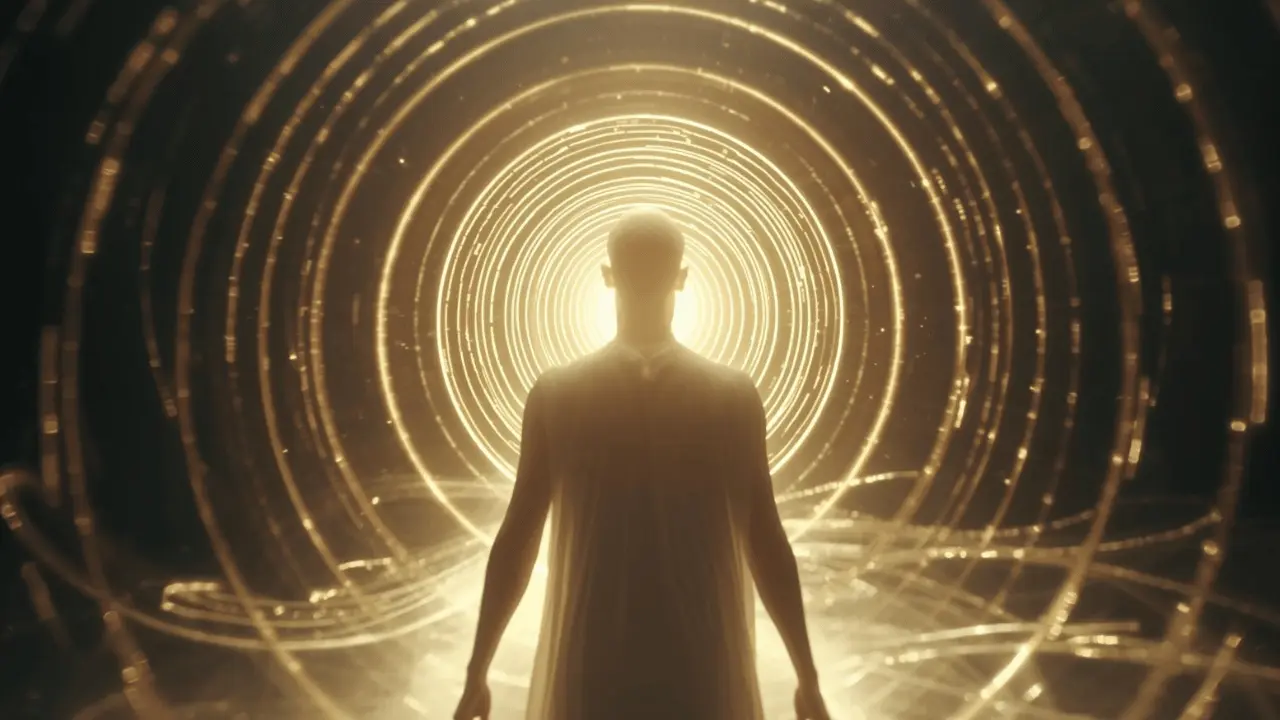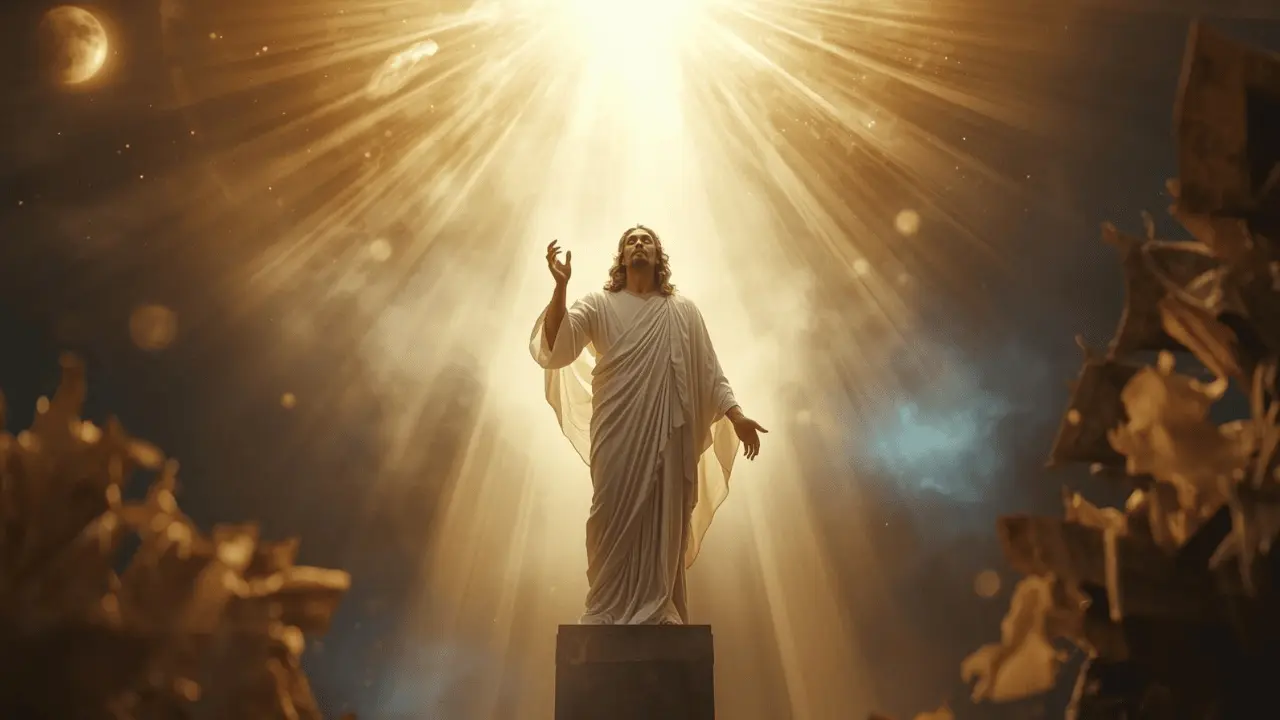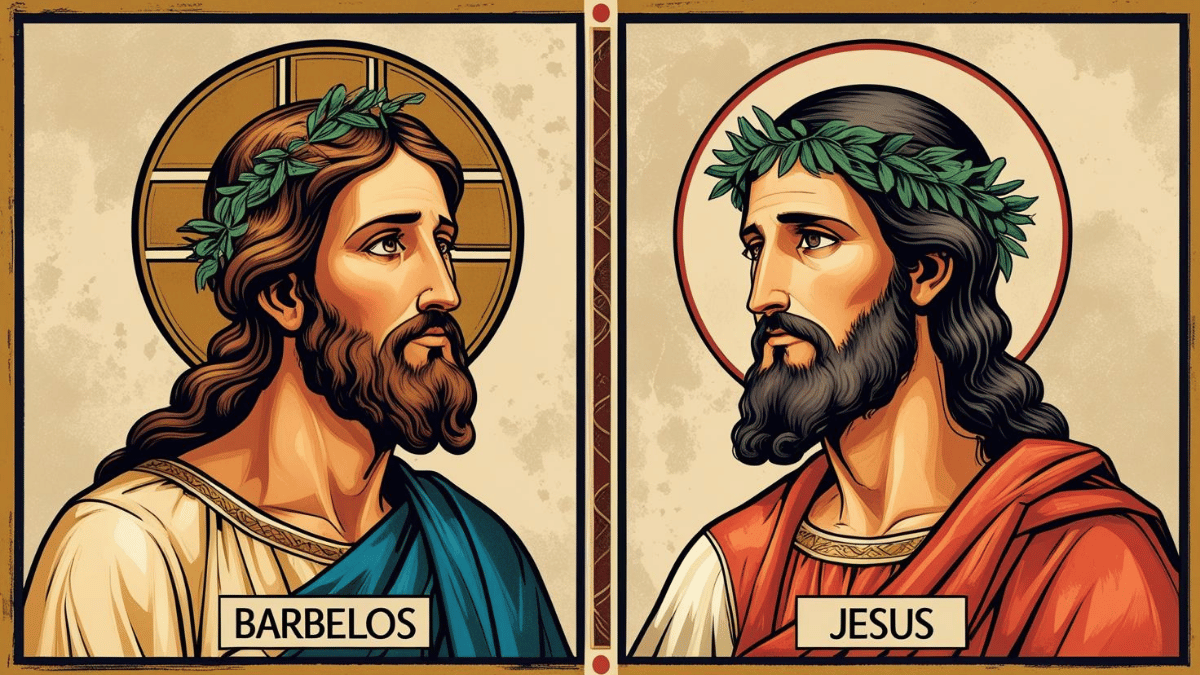It is a question few ever ask, yet it unlocks one of the deepest mysteries in spiritual history.
In the hidden cosmology of Gnosticism, Barbelo is not merely a myth or a goddess, but the First Thought of the Divine—the consciousness from which all creation unfolds. Long before the figure of Jesus appeared on earth, Barbelo existed as the radiant mind of God, the womb of light that gave birth to the Aeons.
To understand her relationship with Christ is to glimpse a vision of reality where divine wisdom takes both feminine and masculine form—and where salvation begins not through belief, but through awakening to the divine spark within.
The Gnostic Cosmos
To grasp the roles of Barbelo and Jesus within Gnosticism, we must start at the summit of the divine order. The Monad—often called the Invisible Spirit or simply the One—transcends all form, gender, and comprehension. It is pure awareness, the boundless stillness from which all being emerges.
From this ineffable Source flows the Pleroma, or “Fullness,” a radiant realm inhabited by spiritual beings known as Aeons. These Aeons are not gods in the conventional sense but personifications of divine qualities—Thought, Truth, Wisdom, and Life. Each one mirrors an aspect of the Infinite Mind.
In the Gnostic vision of reality, creation is not a single moment of divine command but an unfolding of consciousness itself—a continuous emanation in which the divine expresses its unity through the multiplicity of existence.
Barbēlō: The Mother of All Aeons

At the dawn of this divine unfolding stands Barbēlō, the First Emanation and the First Thought (Protennoia) of the Invisible Spirit. She is often described as the Mother-Father, the Womb of Light, or the Image of the Invisible God.
In The Apocryphon of John—one of the most profound Gnostic writings discovered in the Nag Hammadi Library—Barbēlō appears as the first moment of divine self-recognition. Through her, the Invisible Spirit turns inward, beholds itself, and from that act of reflection, the Fullness emerges.
“She became the womb of everything, for she is prior to them all—the Mother-Father, the first man, the Holy Spirit, the triple male, the triple power, the androgynous one with the eternal realm among the invisible ones.”
— The Apocryphon of John
Barbēlō is more than a celestial being; she is consciousness aware of itself—the living mirror of the divine mind. Within her radiance lie all potential forms of existence. She embodies the feminine aspect of divine wisdom, the sacred vessel through which the Source beholds and experiences its own infinite nature.
The Emergence of Christ
From the union of the Invisible Spirit and Barbēlō arises a new emanation—the Christ Aeon. In Gnostic cosmology, Christ is not at first a human figure but a radiant being of divine light, embodying the pure essence of Truth and Knowledge (Gnosis).
Within the Pleroma, Christ dwells in perfect harmony among the Aeons. Yet when the lower Aeon Sophia—the embodiment of Wisdom—falls from the Pleroma and gives birth to the imperfect material realm, it is Christ who descends to restore the lost light and heal the rift within creation.
Thus, in Gnostic understanding, Jesus of Nazareth serves as the earthly vessel of this transcendent Christ Aeon. The divine consciousness of Christ unites with the human Jesus to reawaken humanity to its forgotten divine origin.
“He came to reveal to those of the whole race of mankind the knowledge of the Father, the revelation of the hidden things, through whom the darkness is destroyed.”
— Trimorphic Protennoia
Who Came First: Barbēlō or Jesus?
From a Gnostic perspective, the answer is clear: Barbēlō came first.
She is the first emanation, the first awareness of the Infinite, existing long before time, matter, or the earthly figure of Jesus. Christ—the divine light—emerges through her, as an expression of her perfection and her connection to the Invisible Spirit.
In this divine sequence:
The Invisible Spirit → Barbēlō (First Thought) → Aeons → Christ (Redeemer Aeon)
Only much later, when the divine realm interacts with the material world, does the Christ Aeon manifest as Jesus—the human embodiment of divine wisdom and mercy.
Barbēlō, therefore, precedes Jesus both cosmologically and spiritually. She is not a lesser being, but rather the source of divine generation, the archetypal womb from which redemption eventually flows.
Why the Order Matters
In Gnosticism, the order of divine emanations mirrors the journey of the soul. What begins in unity with the Source descends into multiplicity and matter, then seeks to return to its origin through knowledge (Gnosis).
Barbēlō represents the first descent—the movement of the divine into awareness. Christ represents the return, the movement of awareness back into divine unity.
Understanding that Barbēlō came before Jesus helps us see that creation itself begins with self-awareness, and that redemption begins when that awareness reawakens within us.
- Barbēlō reflects the divine light outward.
- Christ gathers that light back inward.
- Humanity stands between these movements, caught between ignorance and illumination.
To know “who came first” is to understand that the Mother of Light (Barbēlō) gave birth to the very possibility of awakening that Christ later reveals.
Barbēlō and Christ in the Apocryphon of John

The Apocryphon of John, one of the foundational Gnostic scriptures, provides the clearest window into this mystery. In it, Barbēlō is depicted as the first emanation, whose thought gives rise to the Christ Aeon and the Fullness.
When Sophia (Wisdom) acts without her divine partner, her fall produces the lower world—a realm of ignorance and forgetfulness. The Christ Aeon then descends through the heavens, guided by Barbēlō’s light, to bring gnosis (divine knowledge) to humanity.
This descent of Christ through the material world culminates in Jesus, who becomes the living embodiment of the divine message: “Know yourself, and you will know the Source.”
Reinterpreting Barbēlō in Modern Spirituality
In modern esoteric and spiritual circles, Barbēlō has been rediscovered as a symbol of divine balance—the union of masculine and feminine energies within the Godhead.
The Gnostic vision begins with a divine feminine consciousness that coexists with the masculine principle. Barbēlō’s androgynous nature—Mother-Father—reminds us that divinity is not dualistic but unified.
For many modern seekers, Barbēlō represents the forgotten face of God—the aspect of divine love and intuition that births awareness itself. She is the spiritual mother of all awakening, the silent presence that nourishes both creation and return.
When we see Jesus through this lens, not as a solitary male savior but as the embodiment of Barbēlō’s light, a new understanding emerges: salvation is not submission but remembrance—a return to the luminous Source from which we came.
The Gnostic Message
The interplay between Barbēlō and Jesus reveals the essence of Gnosticism: that knowledge of the divine comes through inner awakening, not external belief.
Barbēlō symbolizes the potential of divine self-awareness, while Jesus, as Christ, represents its manifestation in human form. Together, they form a bridge between the unmanifest and the manifest, between spirit and matter.
In this way, the question “Who came first?” becomes not just historical or mythological but deeply personal.
- Barbēlō is the awareness that awakens within you.
- Christ is the light that guides you home.
To meditate upon their relationship is to trace your own soul’s journey—from the silent Source, into the world of form, and back into unity.

